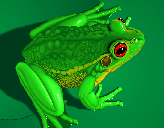|
|
|
|
|
Lesson One: Organisms and Their Environments Activity Two: Ecosystems in Your Yard |
|||||||||
|
|
An ecosystem is a dynamic interaction between the biotic and abiotic parts of a given environment. The living resources are composed of populations of both micro and macro organisms, these are the biotic factors. The physical parts of an ecosystem are called the abiotic factors. These factors include such things as soil, water, and air. Radiant energy from the sun is the source of energy that flows through most ecosystems on this planet. Other important abiotic factors associated with the sun are temperature and wind patterns. Generally the more diverse the living resources are, the healthier the ecosystem will be in the future of its succession. Activity Two: Lab and Research Follow the procedures: 1.Choose two lawns, one that is new (nearly weed free) and one that is mature (full of weeds). Or choose two sites, one that is very dry and one that is moist. Another variation would be to choose a site that is always in the shade versus a site that receives full sun all day. 2.Next mark off a one square meter area in each site. 3.Make notes on the abiotic factors of your sites. (Example: How much sunlight does the site receive?) 4.Next take notes on signs of animal life (bird feathers,animal tracks, and other signs of vertebrates). Invertebrates like insects and spiders are also important to note. 5.Now map your sites and plot the location of all the plants and animals (or animal signs) in your one meter sites. 6.Next compare and contrast the biotic and abiotic factors observed in your sites. 7.Write a one page paper that summarizes your findings and email it to me using the form below. It should include a discussion of the abiotic and biotic factors found in both of your research sites. Be sure to point out the differences and similarities between the two sites. 8. Bring the maps and data sheets from your sites to seminar class and hand them in.
|
||||||||


